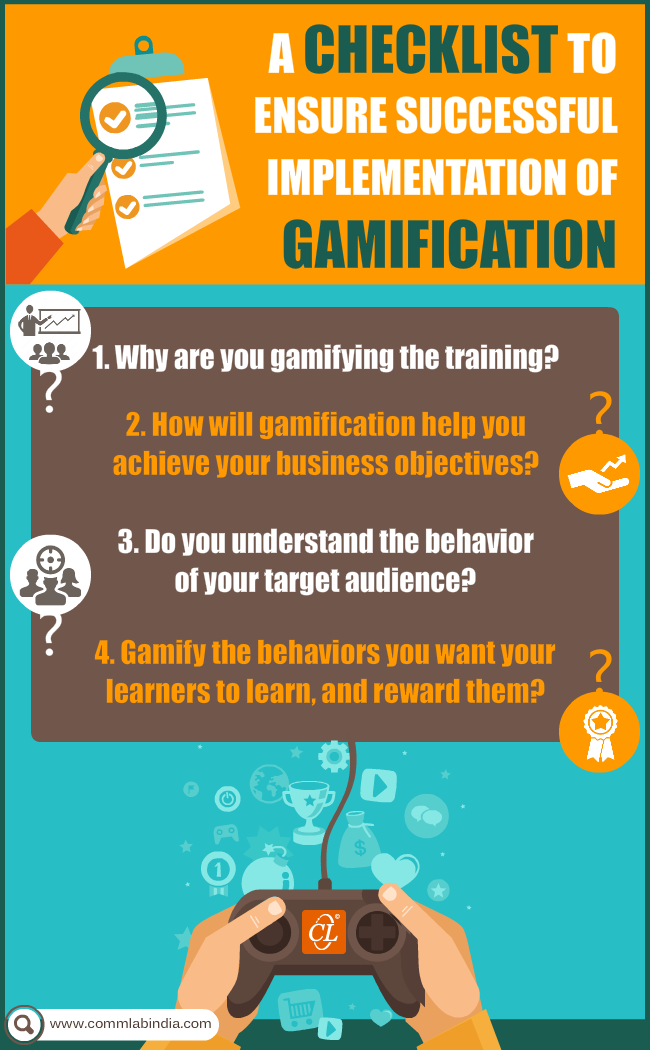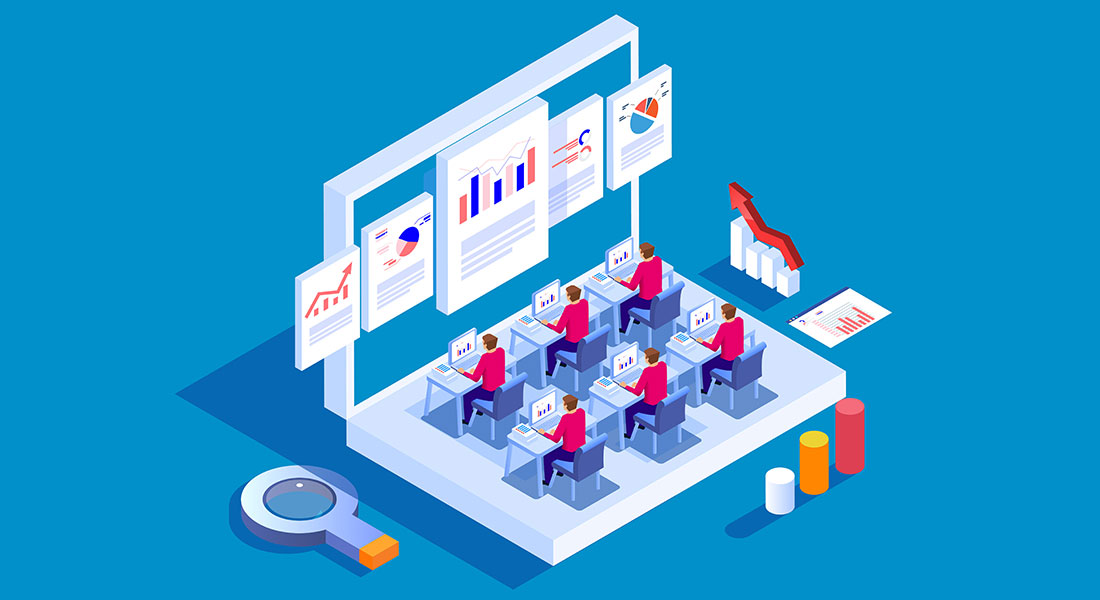Why Gamification is a Leading Corporate Training Trend in 2025?

Learner disengagement is a real problem but 2025 is set to change the game—literally! Gamification is emerging as the top trend in corporate training, transforming dull, monotonous sessions into dynamic, interactive experiences. By integrating game elements like rewards and achievements, this innovative approach not only boosts motivation but also enhances knowledge retention, making training an exciting and impactful journey.
→ Download eBook: Corporate L&D Trends 2025 – Get the View from the Trenches
Table of Content
- What is Gamification in Learning?
- How Gamification Unleash the Power of Play in Learning?
- Why Use Gamification in Corporate Training Programs?
- What are the Common Myths about Gamification?
- What are the Key Gamification Features?
- What Are the Challenges of Implementing Gamification?
- What Are the Tips for Successful Gamification Implementation?
- What are the Top eLearning Authoring Tools with Gamification Features?
- How a Gamified Approach Transformed an Information Security Course
- What’s the Buzz About AI-powered Gamification?
What is Gamification in Learning?
Gamification in learning involves using game design features and concepts in settings outside of gaming, such as corporate training programs. It’s more than just adding a game to a learning module. Gamification takes the mechanics of games—such as competition, achievement, and rewards—and integrates them into the learning process to make it more engaging and motivating.
Game elements, when designed well, can turn mundane learning tasks into exciting activities. These elements encourage learners to push their limits, interact with the content more deeply, and retain information for longer periods.
How Gamification Unleash the Power of Play in Learning?

It's all about the thrill of competition and the satisfaction of achievement. Gamification taps into our innate desire for challenge and recognition, motivating learners to strive for excellence. As they progress through game-like challenges, learners gain immediate feedback and tangible rewards, which foster a sense of accomplishment and drive. This approach not only enhances knowledge retention but also cultivates a thriving learning culture that emphasizes growth and development.
Watch this video to understand what wonders gamification can do in corporate training.
Why Use Gamification in Corporate Training Programs?
The traditional learning model can often fail to engage today's learners. Gamification flips the script by making the learning process enjoyable.

Here are several reasons why gamification has become a must-have in modern employee training and development programs:
Enhances Engagement
It incorporates fun and interactive elements into learning activities, transforming training into a more enjoyable experience. By leveraging game mechanics such as points, badges, and leaderboards, learners become more invested in their training, which can significantly reduce feelings of disengagement. This heightened engagement not only makes learning more enjoyable but also fosters a positive shift in behavior as learners become more eager to participate and absorb information.
Promotes Critical Thinking
With gamification, learners are presented with challenges that require problem-solving and reflective thinking. Interactive game-based learning scenarios allow employees to experience relevant situations and assess their responses, leading to a better understanding of the taught concepts. This hands-on approach not only deepens their understanding of the material but also encourages them to think critically about different aspects of their roles, ultimately leading to better decision-making and application of learned concepts in their work.
Encourages Behavioural Change
Integrating games into workplace training can significantly influence employee behavior. By introducing a playful competition and a reward system, employees may feel more motivated to assume greater responsibility and accountability for their actions. The positive reinforcement inherent in gamified systems can lead to a shift in mindset, encouraging employees to adopt behaviors that align with company goals and values, resulting in a more proactive workforce.
Increases Retention Rates
It serves as an effective strategy for enhancing knowledge retention among learners. The incorporation of game elements creates a sense of achievement and encourages learners to strive towards completing their goals. As learners experience a tangible reward for their efforts, they are more likely to remember the information and skills acquired during training sessions, leading to higher retention rates and improving overall job performance.
Boosts Motivation
Gamification effectively taps into both intrinsic and extrinsic motivators, driving learners to achieve their objectives. By presenting challenges that come with rewards, recognition, and elements of friendly competition, learners feel more compelled to engage in the training process. This blend of motivation not only makes learning more appealing but also instills a sense of purpose, pushing individuals to strive for excellence in their professional development.
Fosters Collaboration
Many gamified learning experiences encourage teamwork and collaboration among learners. By working together to achieve common objectives, employees enhance their communication and collaboration skills while building relationships with colleagues. This collective effort not only promotes a sense of community within the workplace but also leads to better team dynamics and improved performance as employees learn to leverage each other's strengths in reaching shared goals.

Corporate L&D Trends 2025
Get the View from the Trenches
- Win with AI
- Design for the agile workforce
- Unlock scale, volume, quality
- Make an impact
- Much more
What are the Common Myths about Gamification?
Myth 1: Gamification and game-based learning are the same
Both these terms are used interchangeably in the eLearning space, but they are not the same. Gamification is the use of game elements and mechanics (storytelling, badges, trophies, and leader boards) which are inherently not game-based. These elements in eLearning, are meant to engage and motivatelearners. On the other hand, game-based learning incorporates actual “games” in the learning process with an aim to transfer a specific skill in a fun way.
Although game-based learning and gamification offer a variety of benefits to eLearning, it’s important to know the distinction between them. This is to not only choose the best possible approach to serve your eLearning goals and objectives, but also to meet the learning needs of your learners.
Myth 2: Gamification is easy to create
Creating a gamified eLearning course is not an insignificant task.
Gamification is no small act. It takes time and good planning to come up with an instructional design strategy based on game mechanics and ensure good look-and-feel of the gamified online learning course. It requires instructional designers to always keep in mind the desired learning objectives and develop learning content accordingly.
Karl Kapp, in his book The Gamification of Learning and Instruction, suggests you ask the following questions before you implement game elements in your online training:
- Will adding rewards help the learner at certain points of the instruction?
- Will a leaderboard increase motivation and the fun potential or distract learners?
- Does the story capture the right mood of the learning experience?
Myth 3: Gamification = badges, points, and rewards
There’s more to gamification than meeting the eye.
Adding extrinsic rewards such as badges, trophies, medals, and points is an important part of gamifying online learning courses, but they should not be the sole motivating factor for your learners. Intrinsic motivation refers to behavior driven by internal rewards such as enjoyment, a boost in confidence, positive feelings and happiness.
Intrinsic motivation will make learners want to engage with the instruction itself, rather than interacting with it for the rewards.
Myth 4: Gamification is perfect for every learning situation
This is probably the most pervasive gamification myth in this list – that gamification is ideal for any learning situation.
There are probably many learning situations where gamification won’t work. For instance, Sexual Harassment and Diversity Training is a very sensitive concept and involves peoples’ emotions, and courses on these topics may not be received well by learners if you choose to gamify them.
Many a time, we see learning professionals and trainers catching hold of a new concept and painting it as a solution to all their learning problems. Instead of following the herd, identify the learning need (or the business needs). Determine whether gamified training is really what your workforce needs.
Myth 5: Gamification is less effective for corporate training
Some organizations believe that incorporating game elements in formal corporate trainings may make the program less efficient by placing more importance on competition, rather than learning. On the contrary, gamification delivers many of the benefits of “hands-on” training (found in classroom training) while adding motivational elements such as a scoring system and rewards that promote employee participation and achievement.
Analyze the needs of your learners to find out whether gamification is the right choice.
To help make your job a little easier, match the learning outcomes that might be accomplished with the help of gamification.
Use gamification to:
- Influence learner behavior within a course
- Drive learners to innovate
- Encourage learners to independently build skills or acquire knowledge
- Teach learners new content
What are the Key Gamification Features?
Now that we understand the why do you need gamification, let’s explore the top gamification features that can transform your learning program into an engaging experience.
Are You Ready to Gamify Your Training Program?
Here are Some Features to Try:
- Points and Rewards
- Badges and Achievements
- Leaderboards
- Progress Bars
- Levels and Unlockable Content
- Challenges and Quests
Points and Rewards
One of the foundational elements of gamification is the use of points and rewards. These allow learners to track their progress, providing immediate feedback on how well they are performing.
- Points are awarded for completing tasks, answering questions correctly, or engaging with the content.
- Rewards can be in the form of virtual goods, certificates, or even tangible incentives.
Points give learners a sense of accomplishment, while rewards serve as a form of motivation to keep progressing.
Badges and Achievements
Badges and achievements are visual representations of a learner's progress or skills. They offer a sense of pride and accomplishment, especially when learners reach significant milestones.
- Badges can be awarded for completing a series of tasks, mastering a skill, or hitting a specific learning goal.
- Achievements can unlock special features, extra content, or even certification levels in more formal learning environments.
This feature is particularly effective for long-term motivation, as learners feel recognized for their efforts.
Leaderboards
Humans are inherently competitive, and leaderboards leverage that competitive nature to drive engagement. By displaying rankings of learners based on their performance (e.g., points earned or tasks completed), you create an environment where learners are motivated to improve and climb the ranks.
This feature is especially effective in collaborative settings, such as corporate training or group learning, where healthy competition can drive participation and engagement.
Progress Bars
Progress bars offer a simple but powerful visual indicator of how much a learner has completed in a course or task. Watching the progress bar fill up can create a sense of urgency and motivate learners to finish tasks they’ve started.
This feature works particularly well in longer or more complex learning programs where it’s easy for learners to feel overwhelmed by the volume of content. Breaking the course down into smaller segments with a visible progress bar makes the learning journey more manageable.
Levels and Unlockable Content
Gamification thrives on creating a sense of discovery and progression. The use of levels and unlockable content is one way to do this. Learners start at a basic level and, through continued engagement, unlock more challenging or rewarding content as they progress.
- Levels create a structured learning path.
- Unlockable content ensures that learners stay motivated by always having new challenges or information to discover.
Challenges and Quests
Challenges and quests add an extra layer of excitement to learning. Unlike standard quizzes or tests, these tasks are framed as missions that learners need to complete. Challenges can be individual, while quests can involve multiple steps or objectives.
This feature works well in corporate environments, making learning feel more like an adventure rather than a chore.
Feedback and Instant Gratification
In games, players receive instant feedback on their actions, whether positive or negative. In learning programs, immediate feedback is critical for helping learners correct mistakes and reinforce knowledge.
Gamified learning programs provide learners with feedback in real-time, whether through points, badges, or personalized messages. This instant gratification helps learners stay motivated and prevents frustration, which can occur when feedback is delayed.
Storytelling and Narratives
Storytelling is a powerful tool. By integrating a narrative or storyline into the learning program, you can make the experience more immersive and relatable for learners.
For example, learners could be given a fictional role in a story where they need to solve problems, complete tasks, and make decisions that affect the outcome. This approach creates an emotional connection to the learning material and improves retention.
Social Interaction and Collaboration
A sense of community can amplify the benefits of gamification. Features that encourage social interaction and collaboration, such as group challenges, discussion boards, or team quests, can make learning more dynamic.
Peer-to-peer learning fosters accountability, as learners feel a sense of responsibility not only to themselves but also to their peers.
Customization and Personalization
Allowing learners to customize their learning experience increases engagement. Customization can involve choosing avatars, setting personal goals, or selecting preferred learning paths. Additionally, gamified learning platforms that adapt to a learner's individual needs provide content facilitating personalized learning, which can be much more effective than one-size-fits-all approaches. Personalization can be based on a learner’s progress, preferences, or performance data.

Corporate L&D Trends 2025
Get the View from the Trenches
- Win with AI
- Design for the agile workforce
- Unlock scale, volume, quality
- Make an impact
- Much more
What Are the Challenges of Implementing Gamification?
Gamification is the application of game mechanics and game design principles to non-game contexts, such as marketing, health care, and productivity. When gamification is used in training, learning goals and objectives are aligned with gameplay elements, such as points, badges, leaderboards, and levels.
Despite the potential benefits of gamified learning strategies, there are several challenges that need to be considered when implementing them. First, it can be difficult to create engaging and challenging games that align with learning objectives. Second, games often need to be adapted or created specifically for each subject area or topic. Third, games must be monitored and updated regularly to ensure they remain effective.
What Are the Tips for Successful Gamification Implementation?
Here are a few key tips to ensure the success of gamified learning programs with effective game design principles:
1. Balance Competition and Collaboration:
While competition is a great motivator, too much can lead to stress or disengagement. Incorporate collaborative elements like group challenges or team quests.
2. Provide Meaningful Rewards:
Ensure that the rewards and achievements are meaningful and linked to learning outcomes. Avoid superficial rewards that don’t align with the organization’s learning objectives.
3. Keep it Simple:
Gamification should enhance the learning experience, not overcomplicate it. Introduce only those game elements that directly improve engagement and knowledge retention.
4. Test and Iterate:
Continuously assess how learners are responding to the gamified features. Be prepared to adjust optimize the learning experience.
5. Focus on Personalization:
Customize gamification features to align with each learner's unique style and progress to ensure ongoing engagement.
Ready to put gamification into action? Here’s a handy checklist to guide you!
What are the Top eLearning Authoring Tools with Gamification Features?
Wondering how to harness the power of gamification effectively? This is where eLearning authoring tools come into play. These tools help design dynamic eLearning content that captivates and motivates learners. When choosing an authoring tool, it's crucial to look for those with built-in game elements. After all, who wouldn't want to make learning more fun and impactful? Let’s dive into how the right tools can elevate the training experience!
1. Articulate Rise 360
Articulate Rise 360 is a user-friendly authoring tool designed for rapid eLearning development. One of its key strengths lies in its robust gamification features:
- Branded Leaderboards: Motivate learners by creating custom leaderboards that reflect your company's branding and learning objectives. Track individual or team progress to spark a friendly competitive spirit.
- Course Completion Badges: Reward learners with badges upon course completion. These badges can be displayed on user profiles or incorporated into email notifications, adding a sense of accomplishment.
- Branching Scenarios: Present learners with real-world decision-making scenarios. Based on their choices, the course can branch into different paths, offering a more interactive and personalized learning experience.
- Knowledge Checks: Integrate knowledge checks throughout your course with a variety of question formats like quizzes, matching exercises, and drag-and-drops. Gamify knowledge checks by awarding points for correct answers, increasing learner engagement.
Discover how Articulate Rise 360 offers other features too to make engaging, and effective corporate training courses!
2. Gomo Learning
Gomo Learning offers a user-friendly platform specifically designed for creating microlearning modules.
Gomo excels in gamification for bite-sized learning experiences:
- Points and Badges: Award points for completing modules and achieving milestones. Learners can unlock badges that showcase their progress and achievements, fostering a sense of accomplishment.
- Micro-Challenges: Incorporate short, engaging challenges within modules. These challenges can test knowledge, encourage application of skills, and award points for successful completion.
- Learning Paths: Gomo allows the creation of personalized learning paths, which can be gamified by awarding badges upon completion of specific paths or sequences of modules.
3. dominKnow | ONE
dominKnow offers a plethora of gamification features that you can implement without intimidating programming. Here are just a few unique features:
- Progress Mechanics or "PBLs": Implement points, badges, and leaderboards, to create a sense of competition and comparison, while tracking and data options help you create scores and points.
- Choice and Immediate Feedback: Give learners the chance to make critical decisions and see immediate consequences, creating an engaging, interactive environment.
- Challenges, Missions, and Leveling Up: Spice up your learning path by introducing challenges and levels, perfect for reinforcing old lessons and introducing new ones in a thrilling manner.
- Storytelling: Inject some life into your course by creating narratives and characters that give context to gaming elements, making the learning experience more enjoyable and relatable.
dominKnow's scenario builder, royalty-free stock libraries, hotspot and button functionalities, and testing and assessment options make implementing these gamification features a breeze.
Watch this video to explore more features of dominKnow!
4. Elucidat
Elucidat offers a variety of gamification features aimed at creating engaging and interactive eLearning experiences. These include:
- Point and Badge Systems: Learners earn points and badges for correct answers or completing tasks, providing instant feedback and motivation to continue engaging with the content.
- Interactive Scenarios and Quizzes: These include branching paths, allowing learners to navigate through scenarios based on their decisions, and quizzes with increasing difficulty levels. These elements mimic game-like challenges, adding an interactive and competitive edge.
- Leaderboards and Performance Metrics: Leaderboards foster a competitive environment, encouraging learners to perform better and interact more with the training material.
- Personalized Gamified Journeys: Using branching scenarios, learners can control their progression, which increases engagement and relevance to their specific roles or needs.
How a Gamified Scenario-Based Approach Transformed an Information Security Course — A Succes Story
A major global retail company approached us for our rapid eLearning services to train its employees on information security. For the course, we proposed a scenario-based gamified learning approach. We created 4 personas and created 16 scenarios to train the company’s employees on information security. Using different tools – Flash (for the introduction video), Vyond (for the characters), Adobe Illustrator (for the score meter), and Photoshop, we developed a comprehensive course in Storyline 3.
Know more about the solution and its impact here!
What’s the Buzz About AI-powered Gamification?
AI-powered gamification is revolutionizing corporate training by making learning more interactive, engaging, and personalized. By leveraging artificial intelligence, training programs can adapt in real-time to meet the unique needs and learning styles of employees. AI-powered tools play a crucial role in creating gamified courses, simplifying the process of designing interactive learning experiences.
Discover how AI-powered gamification is transforming employee training, making learning more engaging and effective than ever before!
The Future of Learning and Fun
Gamification is no longer just a buzzword; it’s a powerful tool reshaping the face of employee training and development. By incorporating game-like mechanics, companies are engaging employees like never before, driving motivation, collaboration, and a deeper level of learning. Gamification stands at the forefront of L&D, pushing innovation and making training not just effective but genuinely enjoyable. Don’t get left behind—discover how this and other cutting-edge trends are paving the way for the future of learning. Download our exclusive "Corporate L&D Trends 2025" eBook now to stay ahead of the curve!







![6 Key Considerations for Custom eLearning Tools [Infographic]](https://blog.commlabindia.com/hubfs/blogs/key-consideration-select-custom-elearning-tools-infographic.jpg)